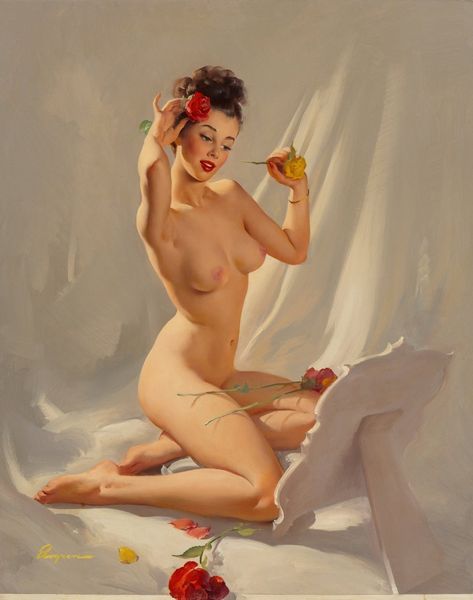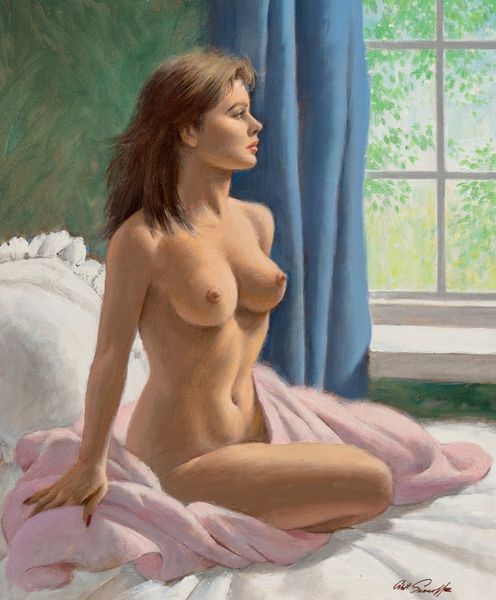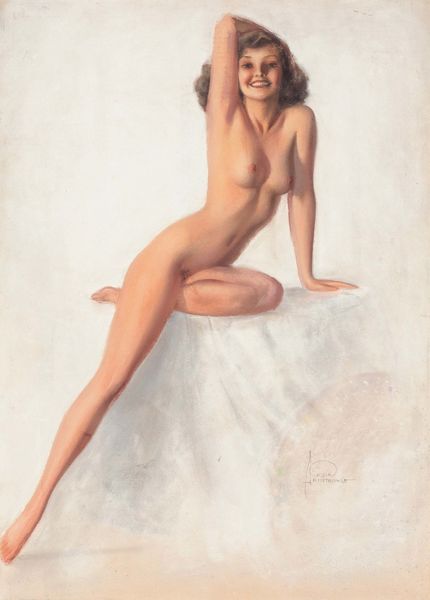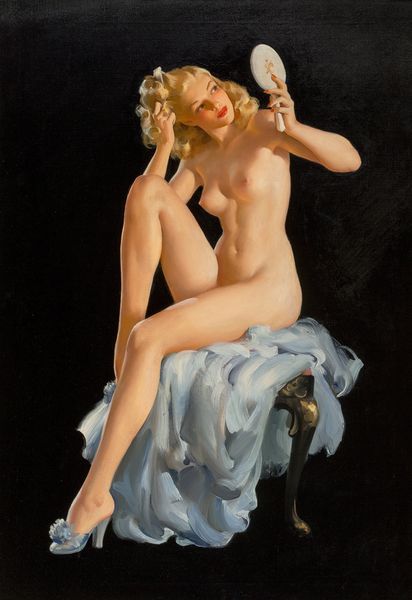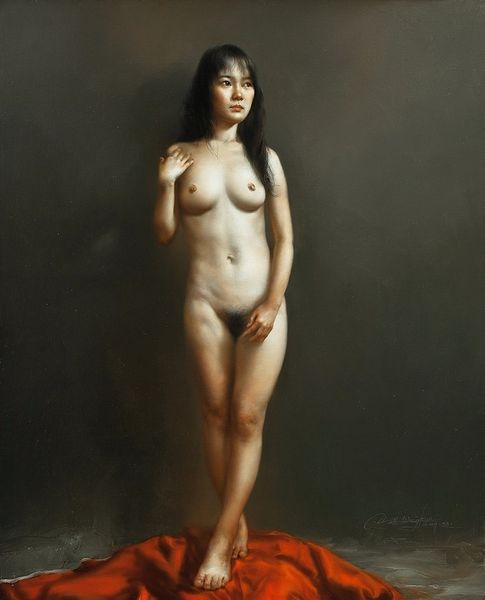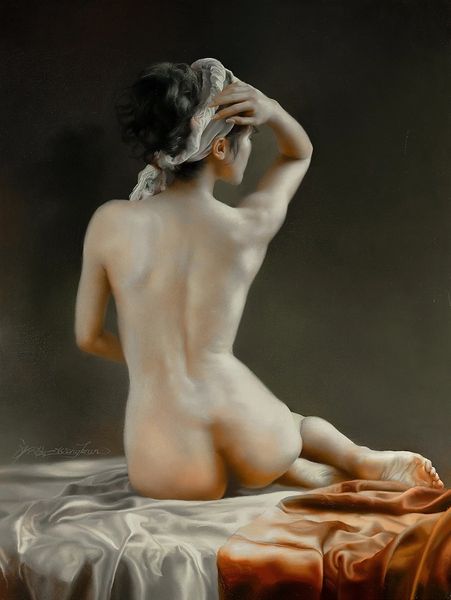
painting, oil-paint
#
portrait
#
painting
#
oil-paint
#
figuration
#
oil painting
#
romanticism
#
genre-painting
#
nude
Copyright: Modern Artists: Artvee
Editor: Here we have Arthur Sarnoff's oil painting "Up Before Dawn," and the canvas almost glows. I'm curious how the cultural and societal implications of material—in this case oil on canvas—play out here, considering the artist and the time period. How do you see it? Curator: It's crucial to look at the material conditions that allowed for this piece to be created and consumed. Oil paint, by this time, was a commercially available product. This makes artistic creation more accessible than it would have been when pigments were made in the studio. The mass production extends to the canvas itself, made possible by the textile mills of the Industrial Revolution. What does accessibility do to art’s cultural standing? Editor: It seems like it both elevates and diminishes it, somehow. If everyone has access, does the ‘art’ become diluted by less skilled creators? It also democratizes the market. Curator: Exactly. We see here what might be considered mass-produced art employing what was at the time commercially manufactured paint. The artist here also presents a clear market demand for paintings, and genre paintings, of nudes at the time. And here she is, almost perfectly placed, produced to appeal to the societal lens of the male gaze through material worth and market demand. This kind of work reinforced particular notions of taste and desire, while the materials used further cemented their place in everyday life. How might the reception differ if the figure here was made with watercolor versus oil? Editor: Interesting point! It might carry different associations of worth, skill, access and... permanence. I'm definitely thinking differently about Sarnoff's intentions in using what he used, and why he used it. Curator: Indeed, the choice of materials is never neutral; it reflects both artistic intention and social conditions of production.
Comments
No comments
Be the first to comment and join the conversation on the ultimate creative platform.

